Black History
Black history refers to the stories, experiences, and accomplishments of people of African origin. Black history did not begin in recent times in Canada, but in ancient times in Africa. People connected by their common African history and ancestry have created Black history here. The African-Canadian population is made up of individuals from a range of places across the globe including the United States, South America, the Caribbean, Europe, Africa, and Canada.
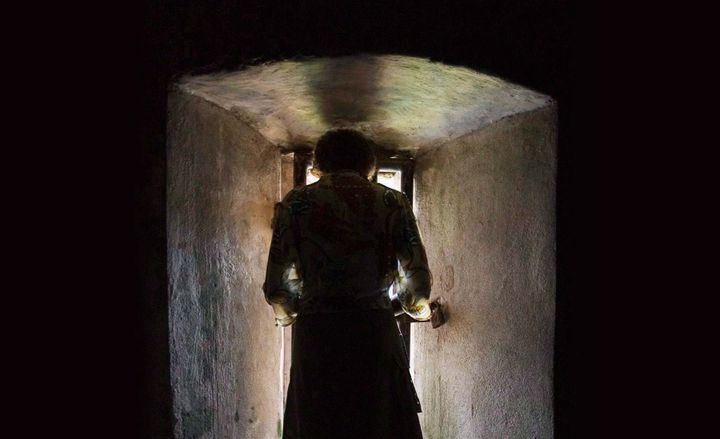
-
January 01, 1608

Black History
First Black Person in Canada
The first Black person thought to have set foot on Canadian soil was Mathieu Da Costa, a free man who was hired by Europeans to act as a translator.
-
August 20, 1619

Black History
British North America's First Enslaved Peoples Arrive at Jamestown
The first shipload of enslaved Africans to reach British North America landed at Jamestown in 1619.
-
January 01, 1628
Black History
First Black Resident of New France
The first named enslaved African to reside in Canada was a six-year-old boy, the property of Sir David Kirke. The child was sold several times, lastly to Father Paul Le Jeune, and was baptized Catholic and given the name Olivier Le Jeune.
-
March 01, 1685
Black History
Code Noir
In 1685, Louis XIV's Code Noir code permitted slavery for economic purposes only and established strict guidelines for the ownership and treatment of slaves. It was officially limited to the West Indies and, although it was never proclaimed in New France, it was used in customary law.
-
May 01, 1689
Black History
Louis XIV Gives Slavery Limited Approval in New France
King Louis XIV of France gave limited permission for the colonists of New France to keep Black and Pawnee Indian slaves. The colonists had complained about the shortage of available servants and workers and appealed to the Crown for permission to own slaves.
-
January 01, 1701

Black History
Slaves Put to Work at Cadillac's Fort Pontchartrain
In 1701, the ambitious French fur-trader and colonizer Antoine de Lamothe Cadillac established Fort Pontchartrain on the shores of the Detroit River. Black slaves were among its first inhabitants.
-
January 01, 1709
Black History
Louis XIV Formally Authorizes Slavery in New France
King Louis XIV formally authorized slavery in 1709, when he permitted his Canadian subjects to own slaves, "in full proprietorship." There were fewer slave-owners in New France than in the neighbouring English colonies, and few French colonists openly questioned the long-standing practice.
-
June 21, 1734

Black History
Angélique Tortured and Hanged
Marie-Joseph Angélique allegedly set fire to her master's Montréal house and destroyed nearly 50 homes. She was tortured and hanged as an object lesson for all Blacks.
-
January 01, 1760
Black History
Provisions for Preserving Slave Ownership in Articles of Capitulation
When the British conquered New France in 1760, the Articles of Capitulation stated that Blacks and Pawnee Indians would remain slaves.
-
November 07, 1775
Black History
Lord Dunmore's Declaration
With armed rebellion inevitable, Virginia's Governor Lord Dunmore declared martial law in his colony and decreed that "every person capable of bearing arms" including "indentured servants, negroes, or others" must report for duty. More than 300 Black men joined the "Ethiopian Regiment."
-
January 01, 1776

Black History
Slaves and Free Persons Reach Nova Scotia
Canada developed a reputation as a safe haven for Blacks during the American Revolution, 1775-1783. The British promised land, freedom and rights to slaves and free Blacks in exchange for services rendered. Some of the Black Loyalists who reached Nova Scotia belonged to the "Company of Negroes" that had left Boston with British troops.
-
May 10, 1776
Black History
Black Corps Formed
Many Blacks actively participated in the American Revolutionary War, serving as boatmen, woodsmen, general labourers, buglers and musicians. General Henry Clinton formed a corps of free Blacks, called the Black Pioneers.
-
June 30, 1777

Black History
Clinton's Philipsburg Proclamation
Sir Henry Clinton encouraged enslaved Blacks to desert rebel masters, promising them freedom and shelter. British Commander-in-Chief Sir Guy Carleton guaranteed that all slaves who formally requested British protection would be freed. An estimated 100,000 Blacks fled to the British side during the American Revolution.
-
July 01, 1782
Black History
Enslaved Sylvia Defends Colonel Creighton
When Lunenburg, Nova Scotia was invaded by American soldiers, Colonel John Creighton's servant Sylvia rose to his defense. Sylvia shuttled cartridges in her apron from Creighton's house to the fort where he and his soldiers were engaged in battle. She also protected the Colonel's son and valuables.
-
January 01, 1784
Black History
David George
Baptist preacher David George was a Black Loyalist from Virginia. He settled in Shelburne, Nova Scotia in 1784 and began preaching in neighbouring Birchtown. His emotional sermons drew both Black and White Christians. Using only Black community funds, George founded several Black Baptist churches and initiated a "self-help" movement that still exists.
-
July 26, 1784
Black History
Canada's First Race-Riot Rocks Birchtown
After the Revolutionary War, the "Black Pioneers" were among the first settlers in Shelburne, Nova Scotia, and they helped build the new settlement. On its fringes they established their own community, "Birchtown." When hundreds of White, disbanded soldiers were forced to accept work at rates competitive with their Black neighbours the ensuing hostility caused a riot.
-
May 12, 1785
Black History
"Negro Frolicks" Prohibited
Officials in Nova Scotia ordered "50 Handbills [to] be immediately printed forbidding Negro Dances & Negro Frolicks in [the] town of Shelburne."
-
July 13, 1787
Black History
NorthWest Ordinance Passed
In 1787, the new United States passed the NorthWest Ordinance, the first anti-slavery law in North America, which applied to its NorthWest Territory, where government authority was not clearly defined. The area was simultaneously "free" American territory and part of a larger, British "slave" province.
-
January 01, 1790
Black History
Imperial Statute
The Imperial Statute of 1790 effectively allowed settlers to bring enslaved persons to Upper Canada. Under the statute, the enslaved had only to be fed and clothed. Any child born of enslaved parents became free at age 25 and anyone who released someone from bondage had to ensure that he/she could be financially independent.
-
July 01, 1791
Black History
Slave Case Heard at Nova Scotia Court
Freedom for Black people was elusive, regardless of the promises made by the British at the end of the American War of Independence. Enslaved woman Mary Postell took her "owner," Jesse Gray, to court, twice, for stealing her children. He was found not guilty, even though he had sold her and her daughter.
-
January 15, 1792
Black History
The Black Loyalist Exodus
The difficulty of supporting themselves in the face of widespread discrimination convinced many Black Loyalists that they would never find true freedom and equality in Nova Scotia. When offered the opportunity to leave the colony in the 1790s, almost 1,200 Blacks left Halifax to relocate to Sierra Leone.
-
March 12, 1793
Black History
Chloe Cooley Incident
Chloe Cooley was enslaved in Upper Canada. She was violently tied by her enslaver, Sergeant Adam Vrooman, and two other men and taken across the Niagara River into New York to be sold. Her struggles against Vrooman precipitated the Act to Limit Slavery in Upper Canada of 1793. It was the first legislation in the British colonies to restrict the slave trade.
-
March 21, 1793

Black History
The Chloe Cooley Case
Upper Canadians were shocked when Chloe Cooley, an enslaved woman from Queenstown, was beaten and bound by her owner and transported across the Niagara River to be sold in the US. Brought before Upper Canada's Executive Council 21 March 1793, English law made prosecution impossible. The incident convinced Lieutenant-Governor Simcoe that the abolition of slavery was necessary.
-
June 19, 1793
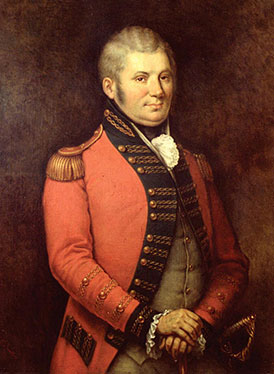
Black History
Simcoe's Anti-Slave Trade Bill
When Simcoe left England to take up his appointment as the first lieutenant-governor of Upper Canada, he pledged never to support discriminatory laws. On 19 June 1793, Attorney General White introduced Simcoe's anti-slavery measure and it passed, although it was not a total ban on slavery but a gradual prohibition.
-
January 01, 1794
Black History
Black Loyalists Petition for All-Black Settlement in Upper Canada
In 1794, based on their military service in the war between Great Britain and America, 19 free Blacks in the Niagara area petitioned Governor Simcoe for a grant of land to establish an all-Black settlement. The petition was rejected. In 1819 the government established Oro Settlement near Barrie.
-
July 22, 1796

Black History
The Maroons Land at Halifax
A group of 600 freedom-fighters landed at Halifax. These immigrants, called Maroons, came from a Jamaican community of escaped slaves who had guarded their freedom for more than a century and fought off countless attempts to re-enslave them.
-
January 01, 1799
Black History
Papineau Presents Citizens' Petition to Abolish Slavery in Lower Canada
Joseph Papineau (father of Louis-Joseph Papineau) presented a citizens' petition asking the government to abolish slavery, prompting a series of anti-slavery measures. While these bills were defeated, a movement towards the abolition of slavery was clearly under way in Lower Canada.
-
February 10, 1806
Black History
Russell Family Sells Slaves
Enslaved people, understandably, were not always obedient. In her personal correspondence, Elizabeth Russell complained about the behaviour of her slave Peggy and Peggy's son Jupiter. In February of 1806 Russell ran an ad in the Upper Canadian press, advertising Peggy for $150 and Jupiter for $200.
-
January 01, 1807
Black History
Upper Canadian Slave Rejects Freedom
Runaway Blacks were used to help defend Detroit, and served in a Black military unit. In 1807, Upper Canadian slave-holder John Askin sent George, a Black 15-year-old, to Detroit on an errand. Black soldiers offered George a weapon and freedom. George considered staying, but returned to Upper Canada and his master.
-
January 01, 1812

Black History
The "Coloured Troops" and the War of 1812
Thousands of Black volunteers fought for the British during the War of 1812. Fearing American conquest (and the return to slavery), many Blacks in Upper Canada served heroically in coloured and regular regiments. The British promise of freedom and land united many escaped slaves under the British flag.
-
July 21, 1812

Black History
Company of "Coloured" Troops Commissioned
In the summer of 1812, Black Loyalist Richard Pierpoint petitioned the government of Upper Canada to raise a company of Black troops to help protect the Niagara frontier. After some debate, the government agreed. A company of Blacks was formed under the command of a White officer, Captain Robert Runchey Sr.
-
September 01, 1813
Black History
"Black Refugees" Set Sail
British Vice-Admiral Alexander Cochrane's offer of transportation for anyone wanting to leave the United States was widely circulated among the Black population. Four thousand former slaves deserted to the British side and were transported to the British colonies. About 2,000 refugees set sail for Nova Scotia from September 1813 to August 1816.
-
January 01, 1815

Black History
The Underground Railroad
Canada's reputation as a safe haven for Blacks grew substantially during and after the War of 1812. Between 1815 and 1865, tens of thousands of African-Americans sought refuge in Upper and Lower Canada via the legendary Underground Railroad.
-
January 01, 1819

Black History
John Beverley Robinson's Pronouncement
Building on Simcoe's early work, Attorney General John Beverley Robinson openly declared in 1819 that residence in "Canada" made Blacks free. He also publicly pledged that "Canadian courts" would uphold this freedom. Many, at home and abroad, took notice.
-
September 24, 1819
Black History
Lieutenant-Governor's Black Settlement Plan
In 1815, Lieutenant-Governor Peregrine Maitland of Upper Canada began to offer Black veterans grants of land in the Township of Oro. His intention to balance "policy with humanity," even in the face of American opposition, was expressed in a letter to a British official in 1819.
-
January 01, 1821

Black History
Last Slave Advertisements Posted
While slavery remained legal in all British North American colonies until 1834, the combination of legislative and judicial action had severely tested the institution by the early 1820s. The last known private advertisement for slaves appeared in Halifax in 1820 and in Québec in 1821.
-
January 01, 1829
Black History
Wilberforce Settlement
By the end of the 18th century, there were more than 40 Black communities in Upper Canada. Life was uncertain in these early settlements. One of the first sizeable Black communities was Wilberforce, founded by Cincinnati Blacks. It was poorly managed and financially troubled and after only six years disbanded.
-
October 28, 1830
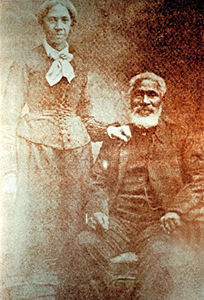
Black History
Josiah Henson Escapes to Canada
Josiah Henson, considered by many the inspiration for Harriet Beecher Stowe's Uncle Tom's Cabin, reached Canada with his family after escaping from Kentucky. A natural leader, Josiah Henson began to help other escaped slaves adapt to life in Upper Canada. He joined the anti-slavery movement and spoke publicly about his experiences.
-
August 28, 1833
Black History
British Parliament Abolishes Slavery
Slavery was abolished throughout the British colonies by an Imperial Act which became effective 1 August 1834. The act formally freed nearly 800,000 slaves but there were probably fewer than 50 slaves in British North America by that time.
-
August 01, 1834

Black History
Abolition of Slavery Act
Black people are now considered British subjects, paving the way for property-owning Black men to vote. But racism and discrimination at polling stations mean many do not cast their ballots. (See Slavery Abolition Act, 1833.)
-
September 01, 1837
Black History
The Rescue of Solomon Moseby
Solomon Moseby, accused of stealing a horse from his owner in Kentucky, escaped to Canada. He was arrested in Newark/Niagara in the summer of 1837. Hundreds of sympathetic Blacks encircled the jail for three weeks to prevent his transfer. Upon Moseby's transport in early September, a riot ensued. Moseby escaped, but two supporters were killed.
-
December 11, 1837
Black History
Corps of Negroes
In the early 19th century, few Upper Canada militia units included Blacks. When the Mackenzie Rebellion broke out, the government welcomed Black men into the provincial forces. On 11 December 1837, a militia order authorized Captains Thomas Runchey and James Sears to raise a "corps of Negroes." Four days later, approximately 50 Blacks had joined the corps.
-
March 06, 1838
Black History
Blacks in Upper Canada Publicly Praised
In the spring of 1838, Lieutenant-Governor Sir Francis Bond Head addressed the legislature to publicly praise Black Upper Canadians for their loyalty and service during the recent rebellions.
-
January 01, 1844
Black History
Anti-slavery Forum
In the Toronto Globe, editor George Brown, one of Canada's leading abolitionists, regularly commented on the disadvantaged condition of Blacks in North America. From its inception in 1844, the Globe gave anti-slavery forces a public forum, attacking United States senator Henry Clay, the Fugitive Slave Act, separate schools, and other issues.
-
March 08, 1849
Black History
Larwill Fails to Block Elgin Settlement
Prejudice does not die easily. In an 1849 petition, ardent segregationist Edwin Larwill expressed his considerable animosity toward Blacks by opposing the Elgin Settlement. He was unsuccessful, but his strong personality and ability to attract support contributed to Chatham's notorious discrimination against Blacks in the 1840s and 1850s.
-
August 18, 1849
Black History
King-Larwill Debate
Edwin Larwill had some support for his segregationist views, even against Reverend William King's proposal to establish the Elgin Settlement. Larwill challenged King to a debate on the proposal. He misjudged his audience and lost support with his extreme views. The debate was a turning point in the history of race relations in Canada.
-
September 18, 1850
Black History
The Fugitive Slave Act
The Fugitive Slave Act passed by the American Congress on 18 September 1850 dealt a severe blow to the American abolitionist cause. It gave slave-owners and their agents the right to track down and arrest fugitives anywhere in the country. Bounty hunters often kidnapped free Blacks and illegally sold them into slavery in the Southern states.
-
January 01, 1851
Black History
First Issue of Bibb's Voice of the Fugitive
Henry Bibb was a rebellious slave who escaped to Detroit around 1840 and began speaking publicly against slavery and organizing abolitionist groups. A decade later, he moved to Windsor and founded the Voice of the Fugitive, which reported on the Underground Railroad and colonization schemes.
-
February 01, 1851
Black History
Canadians React to Fugitive Slave Act
The passage of the Fugitive Slave Act in the United States led to the formation of a larger and more durable anti-slavery society in Canada. Canadians publicly debated "the slavery question"; George Brown's Toronto Globe chastised its journalistic opposition for being soft on slavery; and individuals protested Canadian support of the American anti-slavery movement.
-
February 26, 1851
Black History
Formation of Canadian Anti-Slavery Society
The number of abolitionist sympathizers grew in Canada in the 1850s-1860s. As more Black refugees entered Canada, sympathizers formed organizations and committees to influence public opinion and help freedom-seekers make their way north. On 26 February 1851, the Anti-Slavery Society of Canada was formed, "to aid in the extinction of Slavery all over the world."
-
April 03, 1851
Black History
Frederick Douglass Visits Toronto
When Frederick Douglass visited Toronto and addressed a large anti-slavery audience on 3 April 1851, he was the most famous African-American in the abolition movement. In Toronto, a cheering crowd of 1,200 filled the St. Lawrence's grand ballroom to listen to Douglass expound on the evils of American slavery.
-
September 10, 1851
Black History
North American Convention of Colored Freemen
Because of its large Black community and active anti-slavery society, Toronto was chosen as the site for the North American Convention of Colored Freemen in 1851. Hundreds of Blacks from all over Canada, the northern United States and England attended. Speakers included H.C. Bibb, Josiah Henson and J.T. Fisher.
-
June 17, 1852
Black History
Steamers Bring Freedom Seekers to Canada
By mid-century, Great Lakes steamers regularly transported Blacks to Canada. Underground Railroad agents used scows, sailboats, and steamboats to deliver their precious cargo to Canadian shores. This sustained migration prompted one Toronto Colonist editor to complain on 17 June 1852 that "every boat arriving from the United States seems to carry fugitive slaves."
-
March 24, 1853
Black History
First Edition of The Provincial Freeman
Educator, publisher and abolitionist Mary Ann Shadd founded the The Provincial Freeman newspaper in order to promote Black emigration to Canada. The paper publicized the successes of Black persons living in freedom in Canada. In establishing the weekly, Shadd became the first Black woman in North America to publish a newspaper, and one of the first female journalists in Canada.
-
November 16, 1857

Black History
William Neilson Hall Receives Victoria Cross
William Hall served aboard the frigate Shannon in Calcutta during the 1857 Indian Mutiny. Against all odds, Hall breached a wall of the Najeef Temple to allow British troops to overcome the mutineers. He was awarded the Victoria Cross, the first Canadian naval recipient, the first Black and the first Nova Scotian to win the prestigious medal.
-
April 26, 1858
Black History
First Black Californians Arrive in BC
On the invitation of James Douglas, the governor of British Columbia, the first ship carrying Black Californians landed in Victoria on 26 April 1858. By summer's end, more than 800 Black settlers had arrived. While government legislation suggested that equality prevailed, in truth, convention and little enforcement allowed acceptance to give way to segregation.
-
May 08, 1858
Black History
John Brown Holds a Convention in Canada
Ardent American abolitionist John Brown planned to overthrow the American government and the entire slave system by training a band of men to wage "guerilla warfare" in the American South. He chose Chatham, Canada West, as his operational base. Upon revealing his radical plan, he lost the support of Chatham Blacks.
-
October 16, 1859
Black History
John Brown's Raid
Despite his extremism, John Brown retained some support in Chatham, including from the Shadd family. On 16 October 1859, Brown and several followers seized the United States Armory and Arsenal at Harpers Ferry. Half his supporters were killed and Brown was seriously wounded. In the end, only one Chatham Black took part in the ill-fated raid.
-
December 02, 1859
Black History
John Brown is Hanged
The Harpers Ferry raid left a deep impression on Canadians. In the days and weeks that followed, many newspapers took note of John Brown's efforts, and some even proclaimed him a "hero." Funeral bells tolled in Toronto after Brown's 2 December 1859 execution and many churches held memorial services.
-
February 16, 1861
Black History
"Anderson" Case Heard in British Court
Black refugee "John Anderson" was arrested for having murdered Seneca Diggs, who tried to prevent his escape. He was tried by the Court of Queen's Bench and ordered extradited. British abolitionists got the case before the Queen's Court in England. The case was dismissed on a technicality; the arresting warrant had not mentioned murder.
-
January 01, 1865
Black History
Interview with First Black Girl in Upper Canada Published
American abolitionist and writer Benjamin Drew conducted research in Canada in the 1850s and interviewed many former slaves about the Black refugee experience. In 1865 he published an interview with an elderly woman named Sophia Pooley who claimed to have been one of Joseph Brant's slaves and the "first Black girl in Upper Canada."
-
April 15, 1865
Black History
Torontonians Mourn Lincoln's Death
When American President Abraham Lincoln was assassinated on 15 April 1865, Canadians publicly mourned his tragic death. In Toronto, businesses closed, throngs attended memorial services, and Blacks mourned for two months. Lincoln's death prompted a great outpouring of anti-slavery sentiment.
-
January 01, 1866

Black History
First Black Politician in Canada
Shortly after arriving in Victoria in 1858, Mifflin Gibbs established a business. In 1861, he won public praise for helping to organize a Black militia and decided to run for public office. After an unsuccessful attempt in 1862, Gibbs was elected to the Victoria Town Council in 1866, the first Black politician in Canada.
-
January 17, 1871
Black History
Obituary of Distinguished Black Veteran
On 17 January 1871 in Cornwall, Ontario, the death of John Baker at 105 was announced. In some ways, Baker's life was unique. He may have been the last surviving enslaved Upper Canadian. He had seen his adopted homeland become Upper Canada, Canada West and then, the Dominion of Canada.
-
November 21, 1892
Black History
Canada's First Black Physician Named Aide-de-Camp
Anderson Abbot became Canada's first Black physician in 1861. He served as one of only eight Black surgeons in the Union Army during the American Civil War. He was distinguished by being appointed aide-de-camp of the New York Commanding Officers Dept., the highest military honour bestowed to that time on a Black person in North America.
-
January 01, 1911
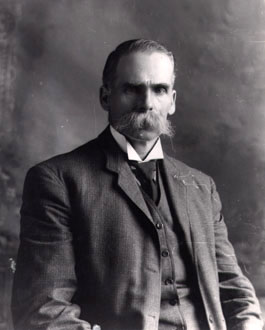
Black History
Oliver's Immigration Policy
Alberta's Frank Oliver wanted tighter controls on immigration. He became the Liberal government's Minister of the Interior in 1905. Oliver was staunchly British, and his policies favoured nationality over occupation. By 1911, he was able to assert that his immigration policy was more "restrictive, exclusive and selective" than his predecessor's.
-
February 01, 1911
Black History
Anti-Black Campaign
By 1909, hundreds of Oklahoma Blacks had moved to the Canadian Prairies, where they met the same wariness and discrimination that had allowed slavery to exist in an earlier time. In February 1911, a few newspapers in Winnipeg even predicted that the Dominion government would move to exclude "Negro immigrants."
-
March 10, 1913

Black History
Death of Harriet Tubman
Harriet Tubman, ardent abolitionist and heroine of the Underground Railroad, died in New York in 1913. As a conductor with the Underground Railroad, she made 19 secret trips to the American South and guided more than 300 slaves to freedom in Canada.
-
January 01, 1914
Black History
Black Canadians on the Home Front in WWI
Between 1914 and 1918, Black Canadians at home became actively involved in the war effort. Black associations—on their own and in cooperation with White groups—raised funds, worked in factories and volunteered in hospitals and as labourers.
-
July 06, 1914

Black History
Birth of Viola Desmond
Viola Irene Desmond (née Davis), businesswoman and civil libertarian, was born in Halifax, NS. After a 1946 incident in which Desmond was arrested for sitting in a “Whites Only” section of a theatre in New Glasgow, NS, she fought her conviction of defrauding the government of the difference in tax — one cent — between tickets in the racially-separated sections. Though the conviction was upheld, her struggle became a catalyst for change. Desmond was pardoned by Nova Scotia Lieutenant-Governor Mayann Francis in 2010.
-
January 01, 1916
Black History
First UNIA Chapters Are Established in Canada
In 1916, the Glace Bay Universal Negro Improvement Association (UNIA), one of the first Canadian divisions of the UNIA, opened in Nova Scotia. This organization was spearheaded by West Indian immigrants who were already familiar with the teachings of Marcus Garvey, founder of the UNIA. After the First World War, West Indians living elsewhere in the country — most notably in Montreal, Toronto and Edmonton — established their own UNIA divisions. For a time, the UNIA was the most important Black socio-economic and educational force in Canada.
-
July 05, 1916
Black History
All-Black Battalion in the First World War
When Reverend C.W. Washington of Edmonton offered to raise an all-Black battalion, military officials authorized the creation of the No. 2 Construction Battalion. The battalion served in France with the Canadian Forestry Corps.
-
January 01, 1919
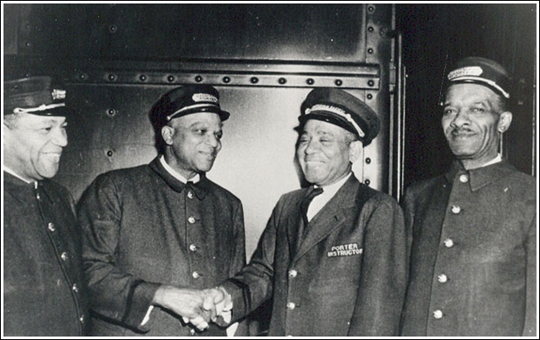
Black History
Order of the Sleeping Car Porters Is Recognized
In January 1919, the Order of Sleeping Car Porters (OSCP), the first Black railway union in North America, was finally recognized. Close to 90 per cent of all Black men in Canada worked in railway jobs, which were severely underpaid and had abysmal working conditions.
-
July 26, 1934
Black History
Birth of Austin Clarke
Novelist, short-story writer and journalist Austin Clarke was born in St. James, Barbados. His book The Polished Hoe (2002) was awarded the prestigious Giller Prize for fiction (2002), the 16th Annual Trillium Prize, the Commonwealth Writers Best Book Award for Canada and the Caribbean region (2003) and the Commonwealth Writers Award for best book.
-
January 01, 1939
Black History
Blacks Accepted into Canadian Services in WWII
Initially, the Canadian military rejected Black volunteers, but as the war continued, many Blacks were accepted into the Regular Army and officer corps. While there was still some segregation in the Canadian forces until the end of the war, hundreds of Black Canadians served alongside Whites in Canada and Europe.
-
January 01, 1939
Black History
Conditions on the Home Front in WWII
Blacks at home assumed the responsibilities of the men and women serving overseas, working alongside Whites in jobs across the country. During World War II, hundreds of Black workers joined labour unions for the first time. The all-Black Brotherhood of Sleeping Car Porters was one of the greatest success stories of the war years.
-
March 14, 1944
Black History
Ontario Passes Racial Discrimination Act
Ontario was the first province to respond to social change when it passed the Racial Discrimination Act of 1944. This landmark legislation effectively prohibited the publication and display of any symbol, sign, or notice that expressed ethnic, racial, or religious discrimination. It was followed by other sweeping legislation.
-
May 18, 1945
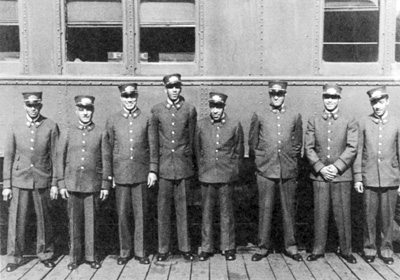
Black History
Black Labourers Gain Protection from Arbitrary Dismissal
After nearly seven decades of unionization efforts, Black porters won a collective agreement that, for the first time, protected Black labourers from arbitrary dismissal. As a result of increased salaries and paid vacations, many porters became financially secure for the first time.
-
November 08, 1946
Black History
Viola Desmond Dragged Out of Nova Scotia Movie Theatre
Viola Desmond is dragged out of a Nova Scotia movie theatre and charged by police after she refuses to move from the main floor of the theatre to the balcony, where Black patrons were segregated. Her decision to fight her charges raises awareness of the racism experienced by Black Canadians. The Nova Scotia government posthumously pardons her in 2010.
-
September 02, 1954
Black History
Toronto Telegram Covers the Dresden Story
Discrimination against Black people continued in the 1950s, despite legislation prohibiting it. In 1954, two Black patrons visited rural Dresden, ON. and were refused service in two restaurants. The Toronto Telegram sent Black "testers" to investigate, who were also refused. When the Telegram ran the story, it confirmed what many Black Canadians suspected, that Canada's laws and regulations were ineffective.
-
January 18, 1958
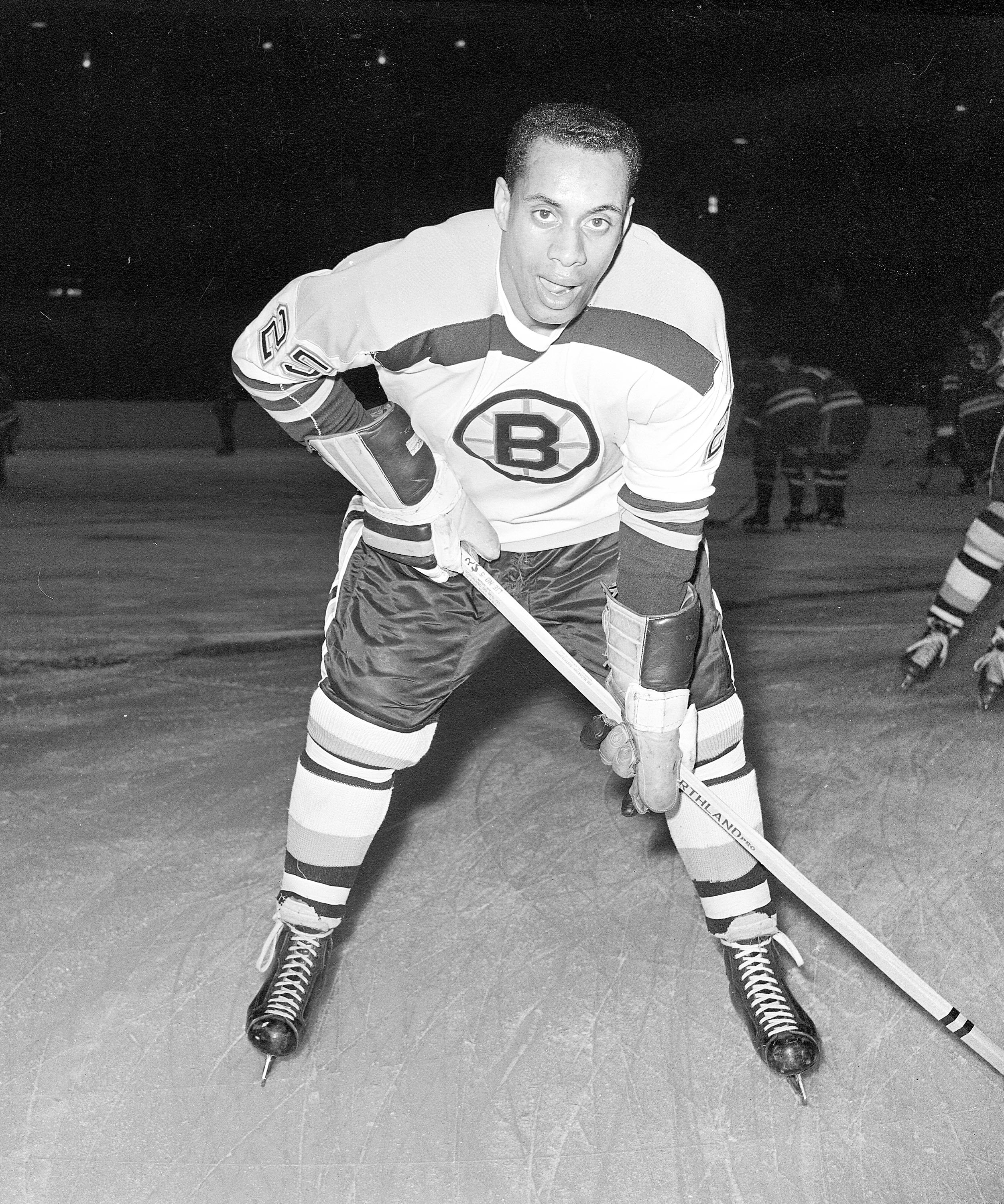
Black History
O'Ree Joins NHL
Hockey player Willie O'Ree has his NHL debut with the Boston Bruins in a game against the Montreal Canadiens, thus becoming the first Black person to enter the league.
-
January 19, 1962
Black History
Fairclough Dismantles Discriminatory Policy
During her term as Minister of Citizenship and Immigration, Ellen Fairclough oversaw improvements to the Canadian Immigration Service, but her most significant accomplishment was the radical reform of the government's "White Canada" immigration policy. Regulations tabled in 1962 helped to eliminate racial discrimination in Canada's immigration policy.
-
September 25, 1963
Black History
First Black Person Elected to a Canadian Parliament
Leonard Braithwaite became the first African-Canadian in a provincial legislature when he was elected as the Liberal member for Etobicoke, Ontario in 1963.
-
January 01, 1964
Black History
Africville Demolished
Encouraged by media attention to Africville's "American-style ghetto," the Halifax City Planning Commission expropriated the land. Residents resisted, citing the community's proud traditions, although Africville lacked basic services such as water, sewage, and good roads. Between 1964 and 1970 residents were relocated and the community razed.
-
January 01, 1965
Black History
Last Racially Segregated School in Ontario Closes
Thanks to the activism of Black parents, racially segregated schools in Ontario were gradually phased out. The last racially segregated school in Ontario, School Section No. 11 in Colchester, closed in 1965. This was accomplished after newly elected MPP Leonard Braithwaite pushed for the clause on segregated schools for Blacks to be officially removed from provincial education policy. Ontario and Nova Scotia were the only provinces to legislate racially segregated schools. The last one in Nova Scotia, in Guysborough County, closed in 1983. However, informal segregation was present in other provinces including Alberta, Saskatchewan, New Brunswick and Prince Edward Island.
-
February 07, 1965

Black History
Death of Viola Desmond
Viola Desmond, who helped galvanize Black Canadians against segregation, died at New York City. After a 1946 incident in which Desmond was arrested for sitting in a “Whites Only” section of a theatre in New Glasgow, NS, she fought her conviction of defrauding the government of the difference in tax — one cent — between tickets in the racially-separated sections. Though the conviction was upheld, her struggle became a catalyst for change. In 2010, Desmond was pardoned by Nova Scotia Lieutenant-Governor Mayann Francis.
-
August 11, 1965
Black History
Klan Activity in Amherstburg
In 1965, racial tension ran high in Amherstburg, ON. A cross-burning set the tone; the Black Baptist Church was defaced and the town sign was spray-painted "Amherstburg Home of the KKK." Five days of racial incidents threatened to escalate but the situation was saved by an investigation by the Ontario Human Rights Commission. No arrests were made.
-
July 28, 1967
Black History
Toronto's Caribana Festival Founded
Approximately two-thirds of Canada's West Indian population resides in the greater Toronto area. On 28 July 1967, ten Torontonians with a common West Indian heritage founded the Caribana cultural festival to display their rich cultural traditions. The Caribana festival continues to promote cultural pride, mutual respect and social unity.
-
September 18, 1967
Black History
David Downey Wins Middleweight Championship
In 1967 David Downey won his first Canadian Middleweight Championship, which he retained until August 1970. Downey's boxing career coincided with one of the most dynamic periods in Halifax's history, which saw the emergence of the city's Black population as a social and political force.
-
October 01, 1967
Black History
Immigration "Points System" Introduced
Prior to 1967, the immigration system relied largely on immigration officers' judgment to determine who should be eligible to enter Canada. Deputy Minister of Immigration Tom Kent established a points system, which assigned points in nine categories, to determine eligibility.
-
January 01, 1971
Black History
African-Canadian Sprinter Harry Jerome Receives Order of Canada
Sprinter Harry Jerome was awarded the Order of Canada medal for "excellence in all fields of Canadian life." Jerome proudly represented Canada in three Olympic Games, winning bronze at Tokyo in 1964.
-
January 01, 1971
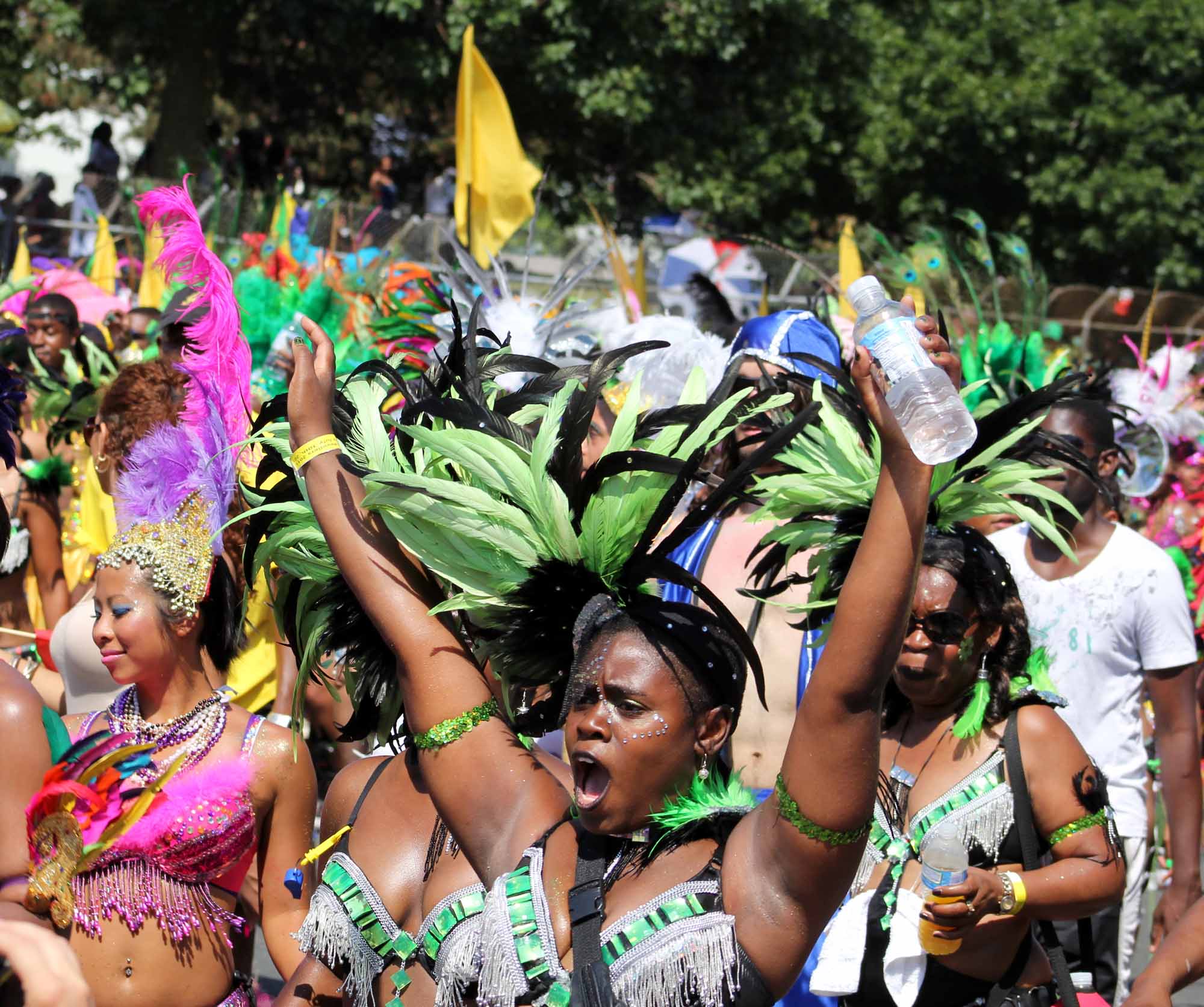
Black History
West Indian Immigration
Following the Immigration Act of 1962 and 1967 reforms, about 64,000 West Indians came to Canada. Canadians of Caribbean origin belong to one of the largest non-European ethnic groups in Canada. In the 2006 census, 578,695 Canadians reported that they originated from the Caribbean, and the overwhelming majority of these people have immigrated to Canada since the 1970s.
-
October 01, 1971
Black History
Trudeau Introduces Canada's Multicultural Policy
Canada's multiculturalism policy grew partly in reaction to the Royal Commission on Bilingualism and Biculturalism, which endorsed a "bicultural Canada," barely recognizing "other ethnic groups." This dilemma was partially resolved in 1971 by Prime Minister Trudeau's assertion that Canada was a "multicultural country with two official languages."
-
January 01, 1975
Black History
Wilson Head Founds Urban Alliance on Race Relations
Black reformer Wilson Head brought a lifetime of experience in civil rights activism with him when he moved from the US to Canada in 1959. Among his numerous accomplishments was the creation, in 1975, of the Urban Alliance on Race Relations. The organization is still dedicated to fighting discrimination against all ethno-racial communities.
-
January 01, 1984
Black History
Nova Scotian Civil Rights Advocate Awarded Order of Canada
Dr. William Pearly Oliver and his wife Pearleen Borden Oliver helped unite the Black community in the 1940s and 1950s. William, founder of the Nova Scotia Association for the Advancement of Coloured People (NSAACP), received the Order of Canada in 1984. Pearleen received an Honorary Doctorate from Saint Mary's University in 1990.
-
January 01, 1991
Black History
Race Riot at NS High School Prompts Education Reform
A fight between one Black and one White student at Cole Harbour District High School escalated into a brawl involving 50 youths of both races. The event mobilized provincial Black activists around the issue of unequal educational opportunities. Nova Scotia's Ministry of Education established a fund in 1995 to improve education and support anti-racist initiatives.
-
January 01, 1994
Black History
Bissoondath's Selling Illusions is Published
Canada's multiculturalism policies came under attack by many authors who claimed that it had created a divided and fragmented society of hyphenated Canadians. The most powerful condemnation came from Neil Bissoondath, a Canadian novelist and immigrant from Trinidad who refused the "burden of hyphenation," which would label him "an East Indian-Trinidadian-Canadian."
-
August 06, 1995
Black History
Donovan Bailey Becomes "World's Fastest Human"
Oakville, Ontario's Donovan Bailey assumed the title of "World's Fastest Human" by winning the 100-metre sprint at the World Track Championships at Göteborg, Sweden. Taking silver in the same race was Montreal's Bruny Surin. Bailey went on to win gold at the 1996 Olympic Games in Atlanta, setting a new world and Olympic record (9.84).
-
January 19, 1998
Black History
Rogers Writers' Trust Fiction Prize Inauguration
Austin Clarke won the inaugural Rogers Writers' Trust Fiction Prize for his novel The Origins of Waves.
-
May 08, 2003
Black History
Clarke Wins Commonwealth Writers' Prize
Austin Clarke won the Commonwealth Writers' Prize for Best Book for his novel The Polished Hoe.
-
August 04, 2005
Black History
First Black Governor General Announced
Prime Minister Paul Martin announced the appointment of Haitian-born Michaëlle Jean as Governor General of Canada. Her dual French-Canadian citizenship and allegations of separatist connections generated controversy. Jean renounced her French citizenship before taking office and refuted a connection to the separatist movement.
-
September 27, 2005
Black History
Jean Sworn in as Governor General
Michaëlle Jean was sworn in as Canada's first Black governor general. She emphasized freedom as a central part of the Canadian identity and has suggested that it was time to "eliminate the spectre" of the two solitudes, French and English, which has so long characterized the country's history.
-
June 26, 2016
Black History
Death of Austin Clarke
Novelist, short-story writer and journalist Austin Clarke died in Toronto at age 81. Clarke grew up in Barbados and moved to Canada in 1955 to study at the University of Toronto. While his varied career ranged beyond literature to positions such as cultural attaché of Barbados in Washington (1973) and general manager of the Caribbean Broadcasting Corporation (1975), he is best known for his fiction, which includes the Giller Prize-winning novel The Polished Hoe (2002). Called “the grandfather of Black Canadian literature” by Lawrence Hill, Clarke — a vocal social critic and civil-rights advocate — was among the first Black writers in Canada to gain international recognition and win major literary prizes.
-
November 15, 2017
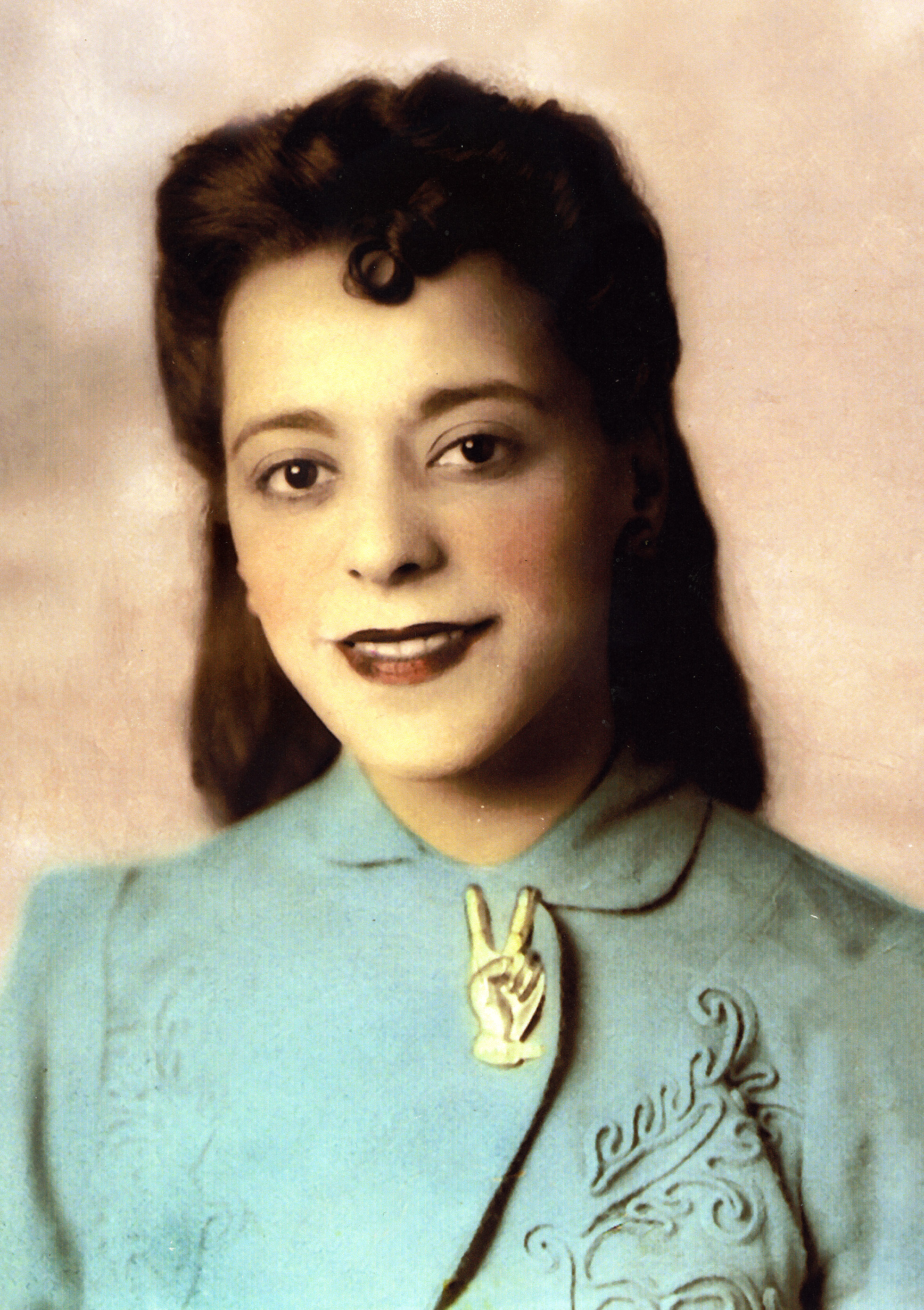
Black History
2017 Canada's Walk of Fame inductees
The 2017 inductees of Canada's Walk of Fame are Donovan Bailey, Stompin' Tom Connors, Viola Desmond, Anna Paquin, Ted Rogers and David Suzuki.
-
November 19, 2018

Black History
Viola Desmond $10 Bill Enters Circulation
Desmond, who fought against racial discrimination after being refused a seat in a Whites-only section of a Nova Scotia movie theatre in 1946, became the first Canadian woman depicted alone on a Canadian banknote (see also Women on Canadian Banknotes).
